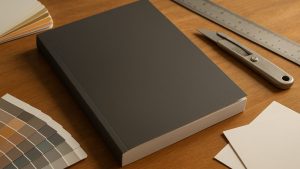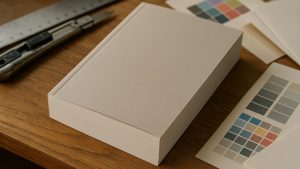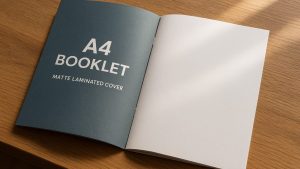
⏱️ Estimated reading time: 4 minutes
So, you’ve finished writing your book — congrats! But now the big question hits: how do you turn that digital file into a real, hold-it-in-your-hands paperback? It’s a step that’s exciting but can feel a bit daunting, especially with all the printing jargon and options out there. Paperback book printing isn’t just about slapping pages together; it’s a mix of art and science, with choices that’ll affect how your book looks, feels, and lasts. Whether you’re self-publishing or a small publisher, understanding the basics of paper types, printing methods, and binding styles can save you time, money, and headaches.
What Exactly Is Paperback Book Printing?
At its core, paperback printing means producing a softcover book that’s usually glued along the spine—this is known as perfect binding. It’s the classic style you see in most novels and non-fiction books on shelves. The process involves printing your pages (called signatures) and then attaching them to a flexible cover.
There are two main printing methods commonly used: litho and digital. Litho printing is great for larger runs because it’s cost-effective and delivers consistent colour quality, especially on coated papers. Digital printing, on the other hand, shines for short runs or print-on-demand because it’s quick and doesn’t require plates, so you can print just a handful or a few hundred copies without breaking the bank.
Picking the Right Paper: What You Should Know
Paper choice might seem straightforward, but it actually plays a huge role in the final feel of your book. Most paperbacks use uncoated or lightly coated paper between 90gsm and 150gsm for the inside pages. Thicker paper (like 130gsm) tends to feel more premium and reduces bleed-through if your book has images or colour.
For the cover, it’s usually thicker card stock, around 250gsm to 350gsm, often with a satin or matt laminate finish to protect against scuffs and give a nice tactile feel. You can even opt for soft-touch lamination for a velvety finish, which is popular in art books or high-end fiction.
Helpful Tips for Getting Your Paperback Just Right
- Mind your page count: Perfect binding works best with a minimum of about 40 pages. Below that, the spine might be too thin to glue properly, so stapled or saddle-stitched booklets could be better.
- Bleed and margins: Always include bleed (usually 3mm) on your print files so colours or images that run to the edge don’t look sloppy. Also, keep important text at least 10mm away from the edge to avoid trimming mistakes.
- Colour or black & white: Colour printing naturally costs more, especially on litho. If your book is mostly text, black and white digital printing can be a budget-friendly choice.
- Choosing binding style: While perfect binding is standard, there are other options like wiro binding or sewn binding for durability, but they come with different looks and price points.
- Think about print run size: Short-run digital printing is perfect if you’re testing the waters or want to avoid storage costs. Larger print runs benefit from litho’s lower per-unit cost.
A Quick Example: How We Helped a First-Time Author
We recently worked with a local author who had written a 120-page novel and wanted to print 200 copies. Initially, they were unsure whether to go litho or digital. After chatting about their budget and timeline, we suggested digital printing with a 130gsm uncoated interior and a 300gsm matt laminated cover. The result was a lovely, tactile paperback that felt professional but didn’t blow their budget. Plus, with short-run digital, they could reorder copies as needed without upfront costs piling up.
Wrapping It Up: What You Should Remember
Paperback book printing doesn’t have to be mystifying. Knowing the basics of paper weight, printing methods, and binding helps you make informed choices that suit your project and budget. Whether you’re printing a few copies for friends or preparing for a bigger launch, the key is balancing quality with cost—and never underestimating how your book’s feel can affect readers’ first impression.
One last thing: custom sizes are often available if you want your paperback to stand out from the crowd. It’s something we’ve seen local authors do to great effect, giving their books a unique shelf presence.
Anyway, the point is, printing your paperback book is a journey—and a rewarding one at that when you hold your finished product. If you keep these tips in mind, your printing experience will be smoother and your book will shine.
Written by Taylor Reed
Print Expert at newstyleprint.co.uk. They share practical insights from hands-on print work across litho, digital and wide-format projects.
Updated on 5 November 2025
Ready to print? Contact Newstyle Print for a fast quote today.
Call 01572 771377 or email hello@newstyleprint.co.uk
Get a quote »





